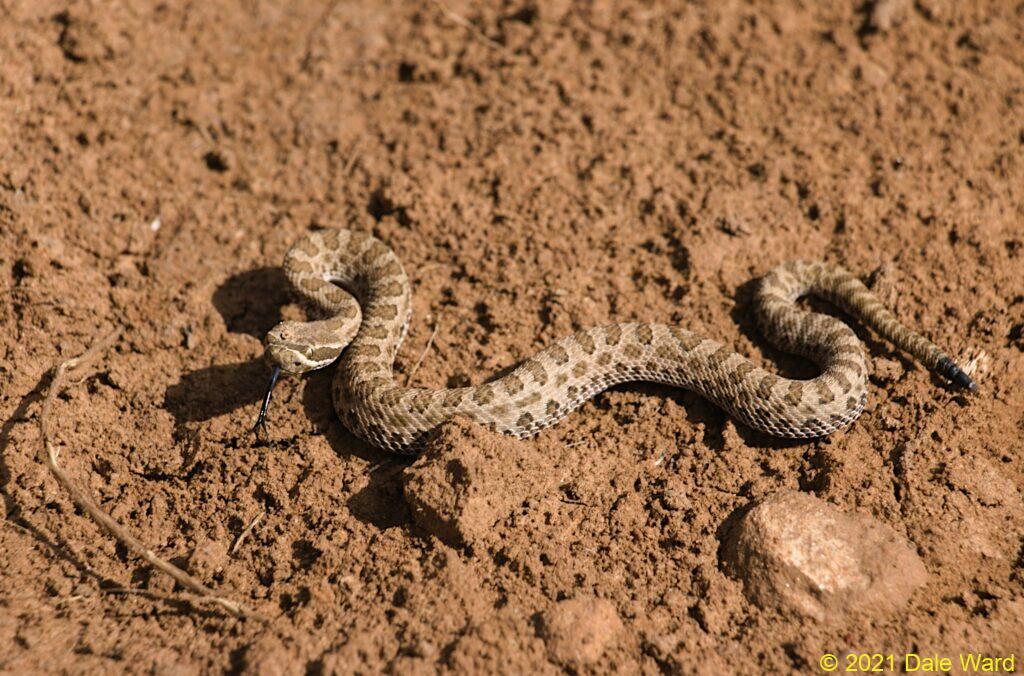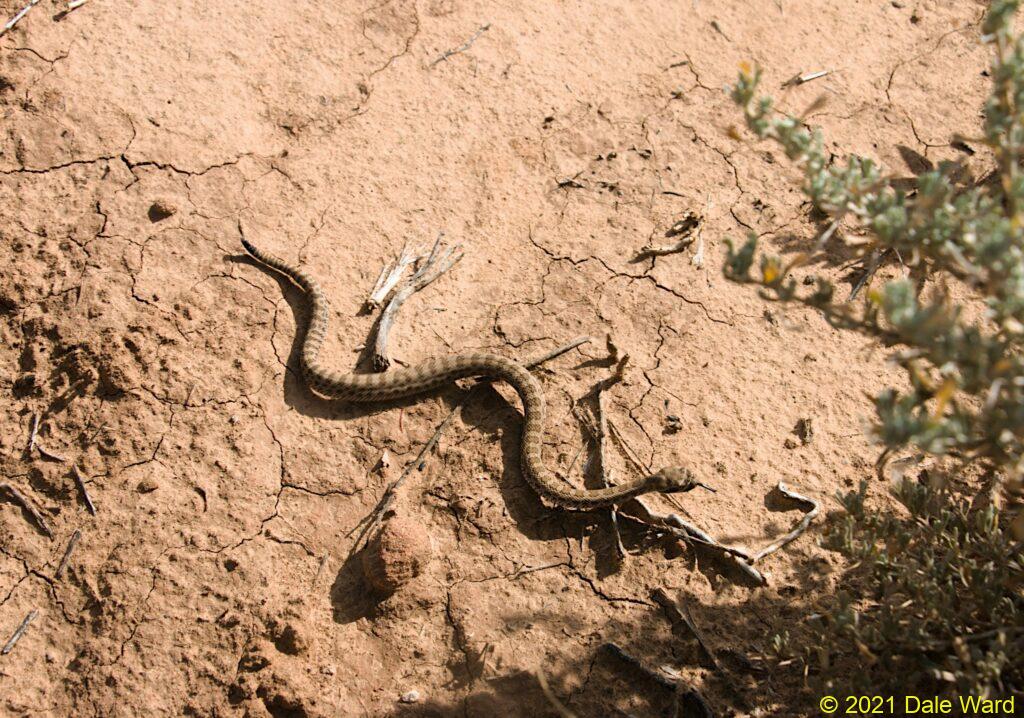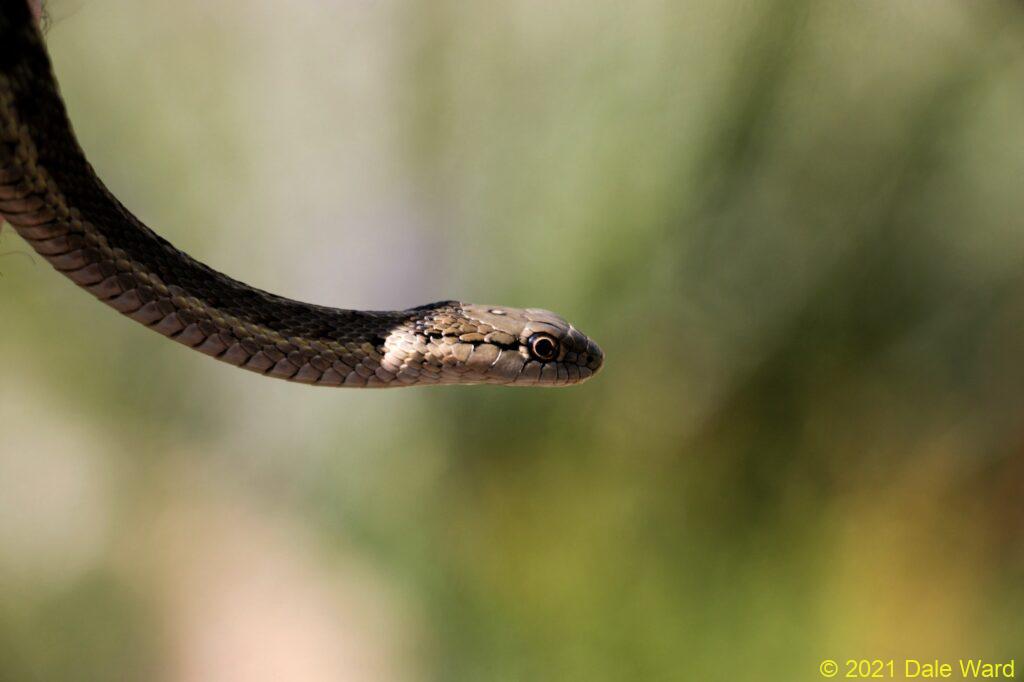Encounter with a young Prairie Rattlsnake (Crotalus viridis)
Coming across a young Prairie Rattlesnake in Southwestern Colorado, and thinking about venom
 Young-of-the-year Prairie Rattlesnake takes a defensive posture.
Young-of-the-year Prairie Rattlesnake takes a defensive posture.
The monsoons are over here, and there are a lot of newly-born snakes roaming about.
We were out with the horses in the Great Sage Plains of Southwestern Colorado last week (October 7, 2021) when we came across a beautiful little Rattlesnake crawling across the trail.
This was a young Prairie Rattlesnake (Crotalus viridis). It was small, perhaps 10” long. I’m guessing that it was born fairly recently - it had a single button-segment on its tail in place of a full rattle.
 Young Prairie Rattlesnake crawls across the trail to hide in a Sagebrush.
Young Prairie Rattlesnake crawls across the trail to hide in a Sagebrush.
The little snake allowed me to take a few pictures, then crawled off into a nearby Sagebrush. It was a beautiful little creature.
The day before this meeting, I saw a young-of-the-year Wandering Gartersnake crossing our driveway. I thought it might get run over, so took it down the hill to the creek.
 Young-of-the-year Terrestrial Garter Snake.
Young-of-the-year Terrestrial Garter Snake.
Seeing the Rattlesnake so soon after seeing the Garter Snake got me thinking about snake venoms and evolution. I wasn’t aware of this until recently, but Garter Snakes bites can be venomous to humans (Vest 1981, Gomez etal 1994).
Garter Snakes (and some other Colubrid snakes) have a pair of Duvorny’s glands that run along their upper jaws, just below the snakes’ eyes. These glands empty at the rear of the snake’s mouth, at the base of the snake’s teeth. The excretions of these gland is what causes the envenomations.
There is surprisingly little known about the role of these glands. Is it to aid in swallowing or digesting the prey? Some folks even argue about whether the Duvorny’s glands are “true” venom glands, since the primary purpose of their secretions might not be to act as venom. The thinking is that the venom-like action of the secretions might just be a sometimes-useful side effect, as far as the snake is concerned.
But even if that is true, isn’t that sort of thing - the repurposing of an existing system to a new use - one of the contributing forces to evolution? An “exaptation”, I believe it’s called.
The effects of the Duvorny’s gland secretions from Garter Snake bites are not serious in humans, just minor swelling and the like. I’ve personally neither known nor heard of anybody who has had any reaction after being bitten by Garter Snakes.
Seeing these little creatures was a joy, and I’m grateful for it. I hope both of these snakes have easy Winters and long lives.
Sources:
Hammerson, Geoffrey A. 1999. Amphibians and Reptiles in Colorado, Revised Edition. University Press of Colorado. ISBN 0870815342.
Gomez, Hernan F, Mark Davis, Scott Phillips, Patrick McKinney and Jeffrey Bent. 1994. Human envenomation from a wandering garter snake. Annals of Emergency Medicine. Volume 23, Issue 5 pp 1119-1122.
Mackessy, Stephen P., Anthony J. Saviola. 2016. Understanding Biological Roles of Venoms among the Caenophidia: The Importance of Rear-Fanged Snakes. Integrative and Comparative Biology. Volume 56, Issue 5. pp 1004-2012.
Vest, Darwin K. 1981. Envenomation Following the Bite of a Wandering Garter Snake (Thamnophis elegans vagrans). Clinical Toxicology. 18(5), pp 573.579. Just the abstract…the full paper is behind a paywall.
Wikipedia’s page on Durvorny’s Gland is a good read also, talks about the controversy over whether Durony’s gland secreations are “true” venom or not.